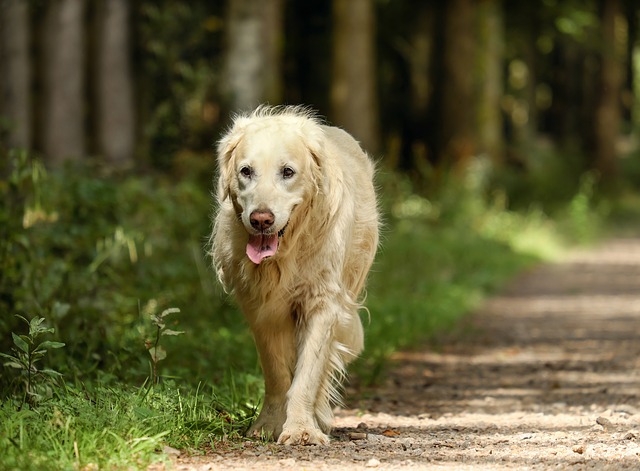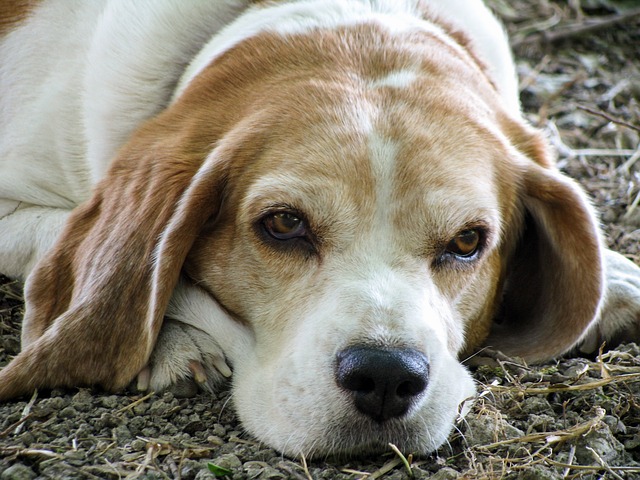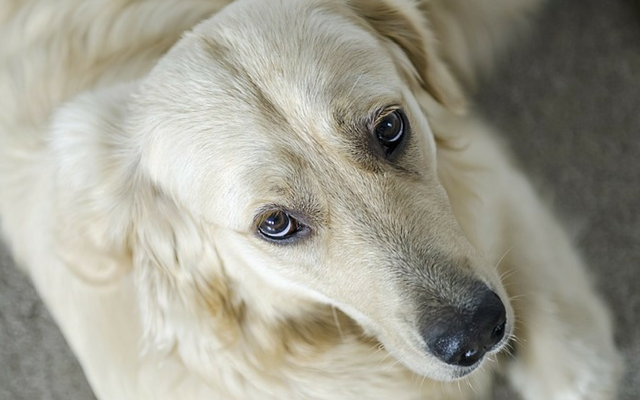
Anyone in the position of caring for a dying dog wants to understand the process as best as possible. Knowing what to expect provides some comfort in an otherwise completely disorienting and uncomfortable time. When it comes time to make decisions about your dog’s end of life, knowledge is power.
It’s important to understand that dying is a highly individualized experience. No two beings, human or canine, will experience it in a completely predictable way. Also, death is a process that begins days, weeks, or even months before a being actually leaves this world. There are some commonalities experienced by most dogs who are at or near the end of this process due to age or advanced disease. Knowing what the typical dying process looks like can help us make confident, educated decisions about end of life care.

#1 – Refusing Food or Water
Towards the end of life, it’s perfectly normal for your dog to refuse food. You may notice a gradual tapering of the appetite or your dog may eat one day and refuse to eat all together the next. When the body is dying, the systems are powering down in a logically organized manner. Food digestion is one of the first to go. The organs involved in breaking down and using food are slowing down as the body recognizes that food and water are no longer necessary.
#2 – Complete Lack of Interest
Leading up to the time of passing, your dog will lose interest in things that are normally her favorite activities. Walks, treats, and even time on the couch will not peak her interest. This is a difficult milestone for many pup parents because the dog just doesn’t act like herself. This once vibrant and loving being seems to barely acknowledge your existence, which can be very painful and confusing for those who know the dog best. Just try to understand that this is normal and not a reflection of you or her relationship with you. She is just progressing through this natural process.

#3 – Long Periods of Lethargy
As you dog moves through the dying process, he will become progressively lethargic. In the beginning, he may take more frequent naps than usual or tire easily. Over time these lethargic periods will increase in duration and frequency. You may also notice that your dog may choose to lay down in a spot that is not his “usual” place. If he often took his naps in the living room, with his humans in close proximity, he may opt for a quieter, calm space as the body winds down.
#4 – Refusal of Water
Usually some time after your dog begins refusing or limiting food intake, she will begin to refuse water. There are many possible reasons for this, including difficulty swallowing. This is a natural progression in the dying process and thus, you should not feel compelled to force liquids. Many people think their loved one has to drink and that is true for those of us maintaining life. Try to remember that your primary concern is keeping your dog comfortable and at peace. Forcing water through a dropper into her mouth or providing IV fluids at the vet would not meet that goal. Understand that refusing water is all part of the normal, natural process, not something that needs to be fixed.

#5 – Gum Color Changes
As your dog’s body begins to pass on, it will instinctively protect the systems most important in keeping the body alive. Blood flow, oxygen, and energy will be diverted to the heart and lungs to keep them functioning and other parts of the body, like limbs and the mouth, will be deprived of oxygen. You can see this change physically when examining your dog’s gums. Instead of their usual pink color, they will look dull gray, white, or even blue. This is completely normal and indicates the body is diverting energy in the predictable life preserving way.
#6 – Restlessness
Restlessness is a common sign that the body is preparing to pass on. It presents as an inability to settle down and the appearance of being uncomfortable. She may pace around or spin in circles during this state. This stage is sometimes thought of as a conflict between the mind and the body, one being ready to go, but the other clinging to life or not accepting what is happening. When a dog succumbs to sleep during this stage, it is often wrought with active dreams. Humans are thought to be working through unfinished business during these heightened dream states and perhaps our puppy friends are doing the same.

#7 – Incontinence
Anyone who has had the fortune to have a dog grow old with them knows that the ability to control the bladder and bowel movements is decreased with age. This leads to more frequent accidents in the house. Although a pain to deal with, these are not imminent signs that a dog is near death. However, at some point during the dying process a dog will often become completely incontinent. In this state a dog will sometimes relieve herself while unconscious and have no awareness of it at all. It’s important to keep your dog dry and clean with each such occurrence.
#8 – Changes in Breathing
As the body slowly shuts down, it is common to observe changes in the breathing patterns. This can begin weeks or days before the dog dies. Breathing may be labored and shallow or light and irregular with long pauses between breaths. Do not be surprised if your dog stops breathing for a long time and then suddenly takes in another breath. This is very common and natural. It is believed that this change in breathing presents no discomfort to the dying. People often report the dying having a last, long, sometimes audible breath just before passing away. It doesn’t happen with everyone but is something to be aware of in case you experience this with your loved one.

Keeping your dog comfortable and showing your love are the most important things to do as you help your loved on pass over. There is no doubt that your presence will serve you and your dog well during this special time. Saying goodbye is never easy but sharing the passage from life to death with someone you love can be a beautiful experience, for which you will always be grateful.
The post Crossing The Rainbow Bridge: Signs That The End Of Life Is Near appeared first on iHeartDogs.com.
from iHeartDogs.com http://bit.ly/2IggaCC http://bit.ly/2XMHQEG

No comments:
Post a Comment